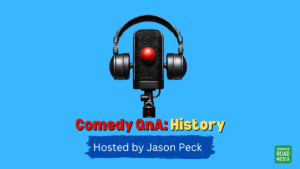“Hi diddly dee, a mystery speaker’s life for me” – okay, that doesn’t quite scan but I don’t claim to be Lennon & McCartney. Earlier this week I had the opportunity to be a mystery speaker for the Women in Banking and Finance Speakers. Even though I’m not in Banking or Finance and I’m not a woman, it was nice to be one of the token two male speakers there.
We were in a nice-looking boardroom and therein lay my biggest problem of the evening
– a very large meeting table in the centre the room. I asked if it could be moved and was told that it couldn’t be. Then I asked if we could go into another room and I was told that if there was another room available then we would’ve been provided it. Hmmm. I guessed correctly that all the members would be sat around the table.
What to do then? How do you connect with your audience when there’s a great big table in the middle of the space? Do you cram everybody to one end of the room where there’s some space and talk like you’re mingling at a crowded party? Do you take a leaf out of Roberto Benigni‘s book and leap onto the table? What would you do?
I thought about standing up where I was sitting and delivering the speech from behind the table. A bit like an after dinner speech, maybe. But even the seating arrangement is a cabaret layout. The Contest Chair led the way and used the space at one end of the table. But I was still concerned about connecting with everybody sat round the table. Standing behind a table or even a lectern can act as a barrier to connecting to your audience. At my own toastmasters club I make sure I never use a lectern because, in my opinion, it comes across as you have something to hide. Audiences generally only see the top half of your body.
If you stand directly in front of the audience you seem as though you’re more open, the audience can see more of you and you don’t come across as though you’re hiding behind something. When I did stand-up comedy I always made sure that I moved the microphone stand out of the way for the same reason. It’s a psychological barrier as well as a physical one.
So I tried to stay as close to the edge of the table as possible. As a result my main note in the evaluations was that I could’ve used my of the space moving back or to each side. Perhaps they were right and I could’ve done more to use the space, but my evaluators did say that I connected with the audience. But I agree that I did hog the edge of the table and could’ve moved round a bit more.
Next time you have an obstacle like this remember that the main thing that you should do is find a way to connect to your audience and if you have a limited amount of space as I did, try to use as much of it as possible.



